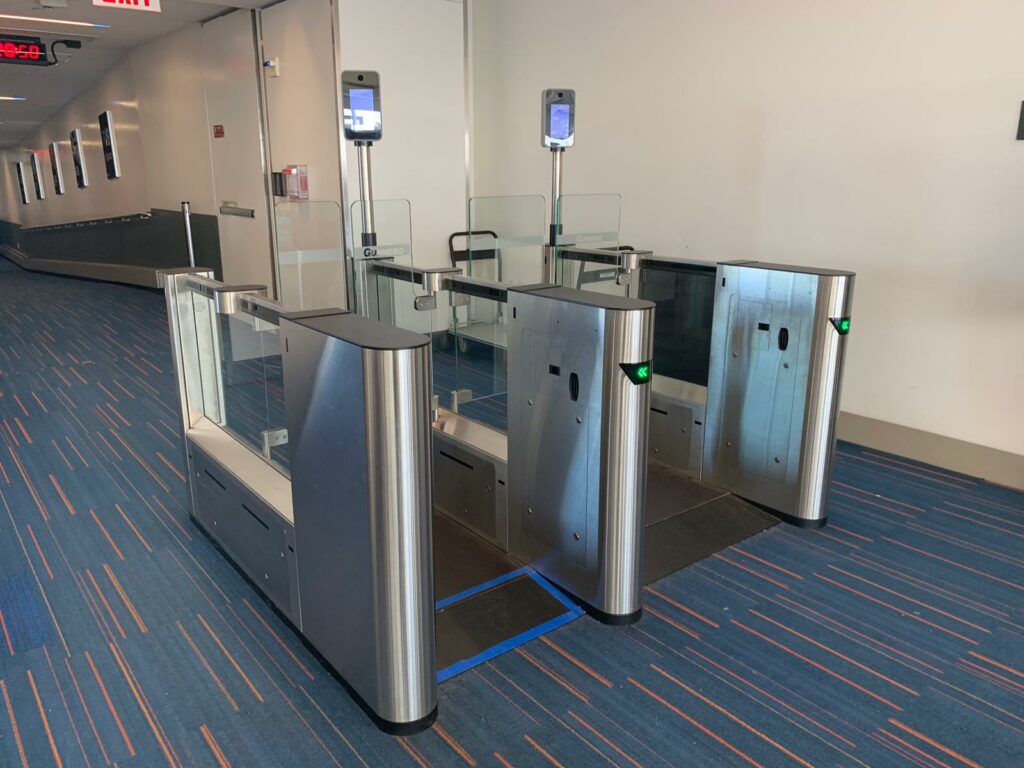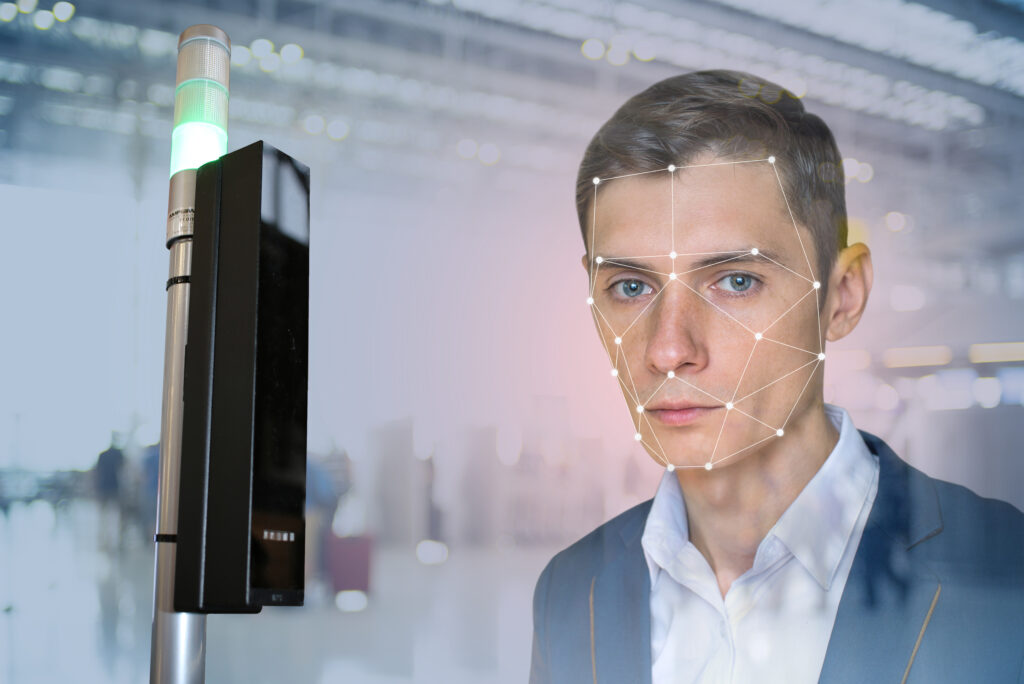Identification technology is rapidly changing the way we travel … and it’s all for the better, according to David Nieuwsma, who leads the Avionics strategic business unit at Collins Aerospace. Nieuwsma makes the case in this Op-Ed contribution for Runway Girl Network.
Remember travelers’ checks? If you’re of a certain age — and I include myself in that category — you’ll recall that travelers’ checks were vital for international travel. In the days before universally-accept credit cards, ubiquitous ATMs, and payment apps came, if you didn’t want to carry a lot of cash into a foreign country and risk loss or theft, you had to have travelers’ checks.
The checks had two signature blocks: the first you signed upon receipt; the second, when you used the check. These double signatures were a key to security. The recipient of the check would eyeball the signatures and make sure they matched.
Like so many other aspects of modern travel, new solutions emerged and all but eliminated the need for travelers’ checks.
Today, we’re on the cusp of another massive change in the way we travel, thanks to another new solution. I’m talking about biometrics — the technology that gives us the ability to accurately identify individuals and to empower them based on that positive ID.
In some circles, the word “biometrics” conjures fear and skepticism. Some are concerned about the privacy of their personal information — that if they allow their biometrics to be used for one purpose, that information could then be used for some other purpose without their consent. Others fear a “Big Brother” plot, where the government uses large biometric databases to track and control people.
These worries stem from a lack of understanding of biometric solutions, how they are used, and what kinds of controls are in place to manage the data they gather. Further, the value of biometrics — and how they can dramatically improve both travel operations and the travel experience for the passenger — is underappreciated.
Let’s put the worries to rest and explain the many benefits.
A Brief History
Biometrics simply means to measure (“metrics”) the body (“bio”). Every individual has a unique set of measurements — whether it’s the distance between their irises, the width of the space between their eyebrows or the length from their hairline to their chin — that can be used for identification.
This idea is not new. It dates back to the 19th Century when criminals were often able to escape justice simply by altering some aspect of their appearance and changing their names. Since arrest records were filed by name, and criminals were using aliases, there was no way to track repeat offenders. A young records clerk with the Paris Police Department named Alphonse Bertillon realized they needed a way to identify people that relied on fixed, unchanging attributes or characteristics, regardless of whether they changed their appearance or name. Bertillon determined that a system based on precise measurement of certain body parts — circumference of the head, length of the middle finger, size of the ears, the distance between the eyes, etc., in addition to standardized photographs of the individual — would solve the problem.
Bertillon went on to create a system — later known as “Bertillonage”— that allowed police to gather, file and retrieve arrest records, paving the way for a breakthrough in criminal investigations. Ultimately, his methods were replaced with fingerprinting, which was much less labor intensive, but it was Bertillon’s work that forever changed the way people are identified.
Fast forward to the Digital Age, where Bertillonage has morphed from the physical measurement of body parts to the digital measurement of body parts. “Bertillonage” has become “biometrics” and it is transforming industries that require accurate identification of individuals.
For Air Travel: A Game-Changer
Chief among those industries is air travel. Airports and airlines must be able to accurately identify who’s traveling where, ensure the right passengers are on the right plane, verify passports and visas for international transfers, match baggage to the right individuals— every part of the commercial aviation infrastructure depends on the proper identification of people. And it’s the human-to-human exchange of identification documents and personal interactions that add friction to the flow of people through airport and airline travel procedures. The back-ups and queues that form because of these interactions also detract from a positive passenger experience.
Biometric ID technology removes that friction. It makes the identification process faster, easier and far more accurate. With one facial scan upon entering the airport, for instance, your face becomes your ID throughout your journey.
You can check your bags, move through security operations and enter the jetway—all with minimal stopping, showing documents and waiting for verification. Your face provides all of the information required.
The technology also enables passengers to make their own way through their journey with less support. Fewer security personnel are needed to ask questions and check documents. Airline personnel are no longer required at key stations — such as baggage areas and airline gate entrances — and can be deployed elsewhere.
 In a post-pandemic world, biometrics will also reduce a major concern associated with air travel: the fear of contracting disease by touching public surfaces or interacting with people who are ill. We already have “curb-to-curb” biometric solutions that enable a passenger to move from the point of origin to the destination airport without touching anything other than his or her own items. A face and a smart phone are all that’s required.
In a post-pandemic world, biometrics will also reduce a major concern associated with air travel: the fear of contracting disease by touching public surfaces or interacting with people who are ill. We already have “curb-to-curb” biometric solutions that enable a passenger to move from the point of origin to the destination airport without touching anything other than his or her own items. A face and a smart phone are all that’s required.
Biometric systems can also be equipped with health diagnostics that can help identify individuals who have a high temperature or other symptoms so they can be evaluated by medical personnel. In combination with virus testing, this system could mean moving closer to disease-free flights and enable the reopening of borders now under COVID-19 restrictions.
Biometric technologies make air travel safer in other ways, too. Think about how much more secure your smart phone or laptop or bank account is when your face or fingerprint is required to unlock it rather than a password. Now think about how much more secure air travel will be when that same technology is fully embedded into commercial flights. With the added accuracy of biometric identification, airlines will know exactly who is on each flight.
By reducing passenger concerns about illness and safety, we can increase the number of people willing to fly as well as the frequency of trips. Less fear leads to increased passenger volume.
All of these improvements amount to a vastly more efficient air travel ecosystem that can accommodate significant increases in capacity.
But What About Privacy?
All good, right? Still, skeptics say, “You’re capturing an image of my face. Where does that image go? What are you doing with it?”
To address those concerns, I’d like to walk you through a typical airport scenario:
As you enter the airport security area, you’re asked to step up to the facial imaging scanner. In less than two seconds, it captures an image of your face, identifying key measurements, then matches those measurements to images of you taken previously for identification purposes. In the U.S., for instance, the image is matched with photos already in government databases such as visa applications, prior entry records to the U.S., or your passport photo housed with the U.S. Customs and Border Protection Traveler Verification Service. If there’s a match, it confirms you are who you say you are and you’re free to proceed. From that point on in your journey, your face is your ID and there is no need for further identification.
As for the photo and measurements taken by the scanner, those are discarded and any datapoints are stored through a secure one-way algorithm. Their only purpose was to verify a match with an existing photo of you. Once that match is made, the images and the metrics have no value and are destroyed.
Biometrics are simply a database matching system, no different from a human comparing your face to your driver’s license picture—only consistently more accurate.
The Biometrics Boon Is Coming
Biometric identification technologies have been in use in airports throughout the world for several years, primarily for immigration and border control. But momentum is building for wider application of the technology throughout commercial aviation as airlines, airports, passengers and other stakeholders begin to see the enormous value this technology can offer.
Like the matching signatures on a travelers’ check, biometric IDs will make quick work of matching facial images to ensure people are who they say they are—and give them the freedom of movement that comes with that identification. It’s a simple, efficient, low-risk solution that will bring countless improvements to the way we travel.
Without question, the biometrics boon is coming. And it will transform, refresh and enhance the travel landscape for decades to come.
David Nieuwsma leads the Avionics strategic business unit at Collins Aerospace, based in Cedar Rapids, Iowa. He is responsible for advancing aviation electronics and information management solutions in the flight deck and cabin for commercial and military customers around the world.
Previously, he led the Interiors strategic business unit at Collins Aerospace, based in Winston-Salem, North Carolina. In that role he was responsible for leading a broad portfolio of aircraft interior solutions. During his career he has served in a variety of Collins leadership positions spanning over 28 years. These roles include: senior vice president for Information Management Services, vice president for Government Systems Strategy and Business Development, as well as vice president and general manager of Airborne Solutions.
Dave has been involved in a variety of programs in the local community, including K-12, Boy Scouts of America, Junior Achievement and STEM programs. He holds a Bachelor of Science in management from the United States Air Force Academy, a Bachelor of Science in computer science from Chapman College, and a Master of Business Administration from the University of Iowa.
All images credited to Collins Aerospace














